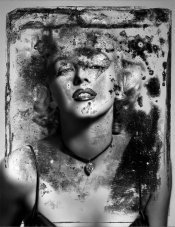ralph
if you can get the developer made the silver gelatin tintype might be a good route. the finicky nature
of the process makes it even more fun when it works ! you can free pour the gelatin on the plate like with wet plate but
you can also just coat the plate with it flat using a brush or other methods. i put small tiny 35mm sized plates in my k1000 and
shoot them 1 at a time ... they develop in a darkroom just like you would paper. and being in germany, you might get a better deal on
the foma emulsion than we get here in the states, you can use any emulsion you want, home made, rockland colloid's stuff as well as
anyone elses' .. the developer that reverses seems to be dektol with a couple of other additives
(donF's formula for the reversal developer is here >>>
https://www.photrio.com/forum/threads/rockland-colloid-should-i-bother.112558/ ( post #99 ) )
get those in germany you won't have to deal with getting it shipped ... i'm doing my best to figure out a way to coat it on pre-exposed / processed blackened paper
to cut down on the expense of metal or glass. i've put it on a variety of black papers but the chemistry leeches out the black dye ... and re - coating emulsion i coat myself
doesn't work well either
PS: you can coat the plates or glass, and enlarge on them if you want, and print the images on these surfaces
without having to deal with reversals &c .. that's how i started my love affair with liquid emulsion by coating huge pieces
of glass and making 11x14+ glass internegatives and glass prints from enlarging on them. you can still put the glass or metal
in your camera and if you develop "normally" you'll just get a negative ( sometimes graphic negative images blow away their postiive partner )













